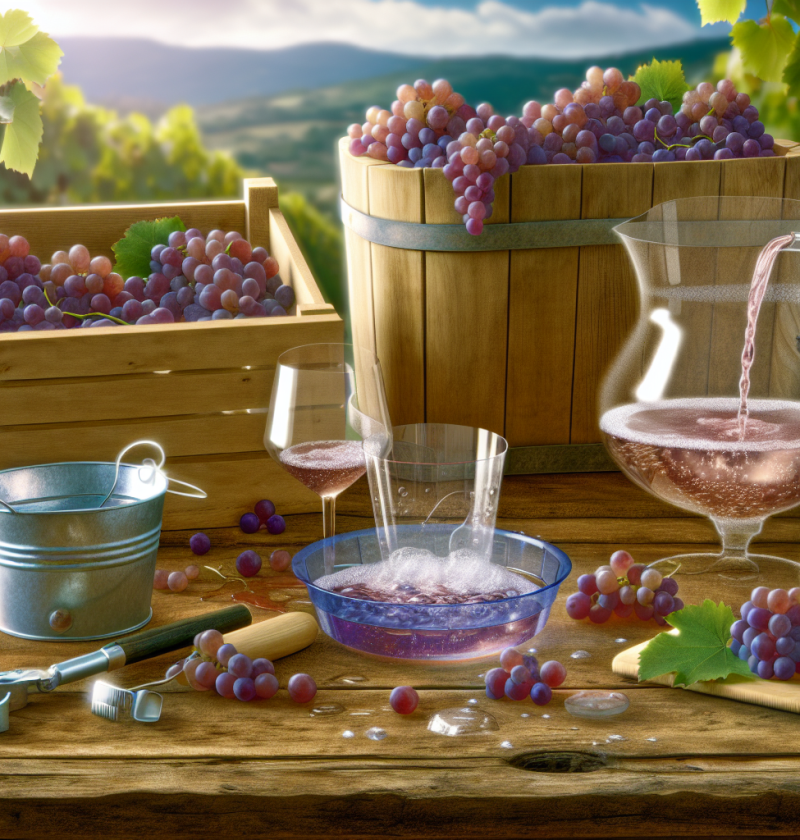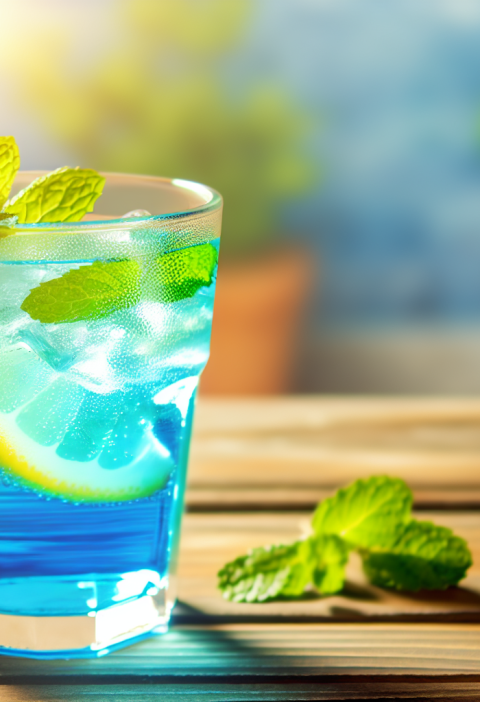“`html
Unlock the Sweet Secrets of Homemade Muscadine Wine: A Journey to Your Own Vineyard Bliss
If you’ve ever tasted Muscadine wine, you know it carries the sun-kissed essence of the South, bursting with flavors that dance on your palate. Making your own Muscadine wine is akin to a delightful journey, a process filled with anticipation and rich aromas that will engulf your kitchen. Imagine strolling through a vineyard, the sweet scent of grapes around you, as you collect fresh Muscadines to capture that magic in a bottle. Today, let’s explore how to transform these humble grapes into a celebratory elixir that brightens every gathering. The best part? It’s a project that cultivates patience and love, allowing each sip to crescendo into a memorable experience that’s shared among friends and family.
This delightful endeavor requires approximately 6-8 weeks of fermentation time, so prepare to immerse yourselves in this fruitful venture! With just a touch of creativity, you will be rewarded with a wine that speaks of your personal touch and flair.
Preparation Time
- Active preparation time: 1-2 hours
- Fermentation time: 4-6 weeks
- Total time: approximately 6-8 weeks
The Necessary Ingredients
- 10 lbs of fresh Muscadine grapes
- 2-3 cups of granulated sugar (adjust based on sweetness preference)
- 1 tsp of yeast nutrient
- 1 packet of wine yeast (like EC-1118 for a clean finish)
- Water (as needed)
- 1 campden tablet (to sanitize; optional)
- 1 teaspoon of acid blend (optional for a brighter flavor)
If you’re looking for alternatives, consider using organic Muscadine grapes when available. For vegan options, the provided ingredients fit perfectly. If you’re interested in gluten-free versions, rest assured, as this recipe naturally contains no gluten.
The Steps of Preparation
Embarking on the journey of wine-making can feel like stepping into a world where every step counts, and each detail is paramount. It’s all about tuning into the rhythms of nature’s cycles and embracing the patience it demands.
- Gather fresh Muscadine grapes, ensuring they’re ripe and sweet.
- Wash the grapes gently under cool water to remove any dirt or pesticides.
- Crush the grapes in a sanitized container to release their juice completely.
- Add the campden tablet (if using), stirring well then cover the mixture and let it sit for 12-24 hours.
- After resting, add the sugar to the grape juice and stir until dissolved.
- Mix in the yeast nutrient and the wine yeast, ensuring everything is well combined.
- Cover the container with a clean cloth and let it ferment at room temperature for a week, stirring daily.
- After one week, strain the liquid into a clean fermentation vessel, discarding the solids.
- Add water to reach the desired volume (around 1 gallon). Adjust sugar and acid levels if necessary.
- Seal the fermentation vessel with an airlock and leave it in a dark, cool area to continue fermenting for 4-6 weeks.
- Once fermentation is complete, siphon the wine into clean bottles, leaving some space at the top.
- Seal the bottles and let them age for a few months before enjoying.
- Share and delight in the fruits of your labor with friends, family, and loved ones!
Nutritional Benefits
- Rich in antioxidants, helping combat free radicals in the body.
- Contains dietary fiber, beneficial for digestive health.
- Offers a source of vitamins C and K, vital for immunity and bone health.
- Potential heart health benefits due to the presence of resveratrol, which is thought to support cardiovascular health.
As you savor your wine, consider enhancing your experience through various upgrades. You might experiment by infusing your wine with spices like cinnamon or vanilla pods during fermentation for exciting flavor notes. Some also choose to add oak chips for an elevated experience reminiscent of a barrel-aged wine.
Questions and Answers
**How long does it take to make Muscadine wine?**
It typically takes about 6-8 weeks from start to finish, including fermentation.
**What equipment do we need to make wine at home?**
Basic equipment includes a fermentation vessel, airlock, a siphon, and some bottles for storage.
**Can we use frozen Muscadine grapes?**
Yes, frozen grapes can be used, just be sure to thaw them and drain excess water.
**Is homemade Muscadine wine safe to drink?**
As long as proper sanitation methods are used, homemade wine is generally safe and can be delightful!
**What should we do if our wine doesn’t ferment?**
If fermentation doesn’t occur, it could be due to inactive yeast; adding more yeast could help kickstart the process.
**How should we store our Muscadine wine?**
Store it in a cool, dark place, preferably laying the bottles on their sides.
**Can we add flavors to our wine?**
Absolutely! You might infuse with herbs, spices, or even citrus during fermentation or aging.
**Is it necessary to condition the wine before consuming?**
Aging allows flavors to mellow and improve, typically two to six months for best results.
**Will the homemade wine taste as good as store-bought?**
With quality grapes and attention to detail, many find their homemade wines to be superior and uniquely characterful.
**Can we carbonate our Muscadine wine?**
Yes, if desired, you could use natural carbonation methods during bottling for a bubbly finish.
From my experience making Muscadine wine, it has become not just a labor of love but a cherished tradition. As I pour each glass, I recall those lovely evenings surrounded by family, sharing tales, and tasting the distinctive fruitiness of our very own creation. I encourage you to dive into this delightful process and share your journey with friends and loved ones, letting the joy of winemaking spread like the vine that birthed it!
If this recipe has inspired you, please share it on your social media and spread the love of homemade Muscadine wine to your friends and family! Cheers!
“`







